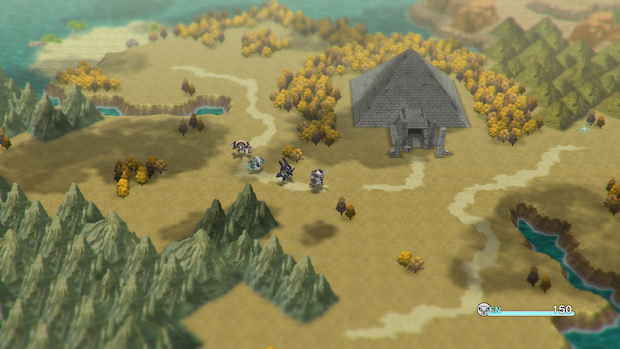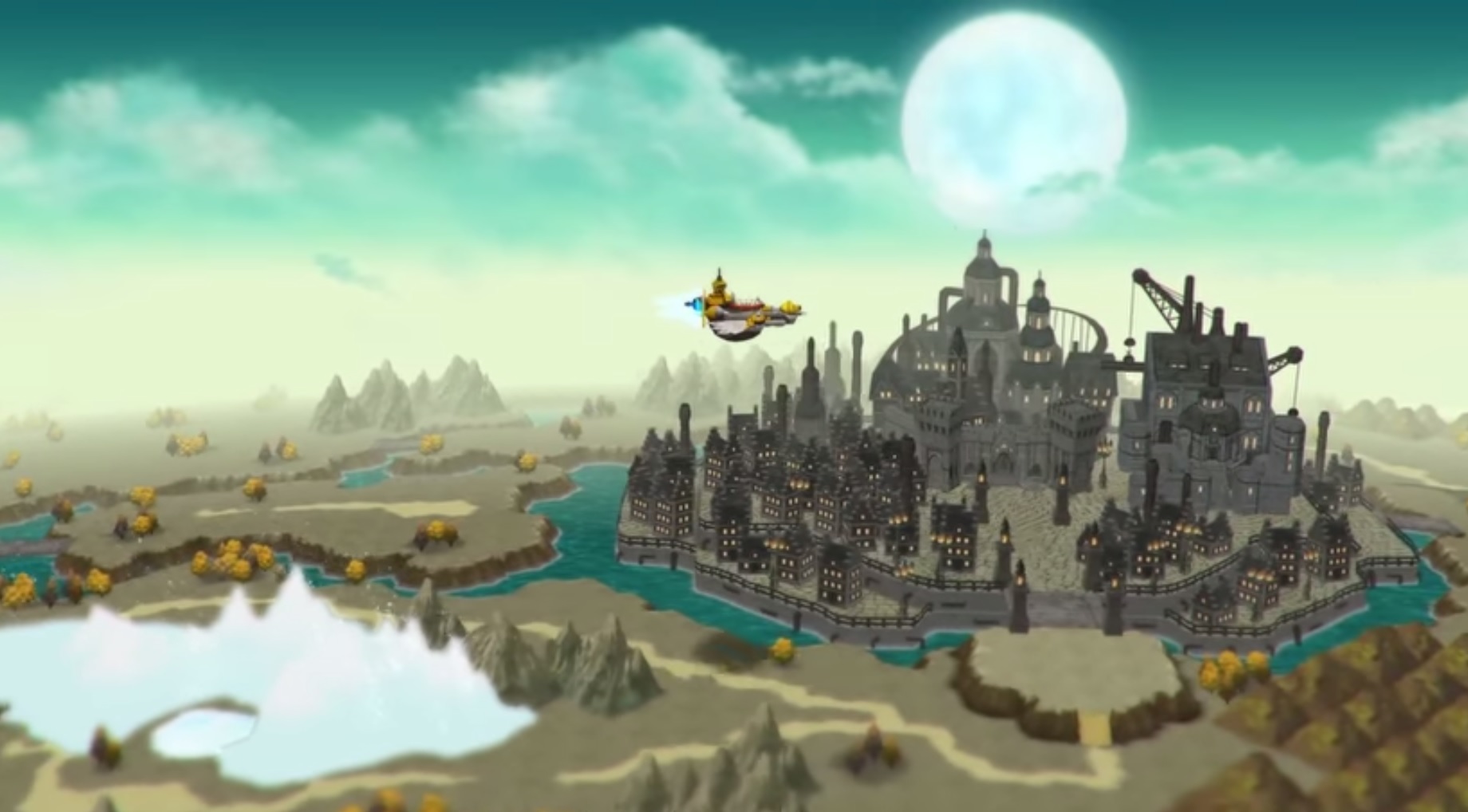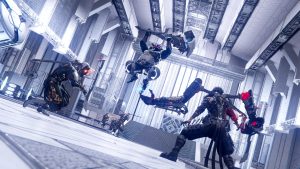
JRPGs have grown beyond recognition throughout their long life of over three decades, and many things that were once considered staples of the genre are now nothing more than memories of a bygone era of the gaming industry. However, those JRPGs are still widely considered to be among the greatest of all time, and try and try though people might, not many games have managed to recapture their magic in all the years that have passed since their initial releases.
The studio known as Tokyo RPG Factory seems to have been set up by Square Enix for that specific purpose- to recapture the charm and brilliance of classic JRPGs by recreating their style of gameplay and storytelling in today’s modern landscape. Their first effort, I Am Setsuna, didn’t come close to doing that, despite having a fair share of its own strengths, but having learnt from their past mistakes and efforts, the developers have made a concerted effort to accomplish their ultimate goal with Lost Sphear. And though I can safely say that Lost Sphear still isn’t the kind of instant classic the developers may have been hoping it would be, it’s a solid JRPG in its own right which accomplishes quite a lot.
"While Lost Sphear isn’t the kind of instant classic the developers may have been hoping it would be, it’s a solid JRPG in its own right which accomplishes quite a lot."
The biggest strengths and weaknesses of Lost Sphear both stem from the same thing, that being the very premise of this game. It takes inspiration from a number of the genre’s greatest titles to date, from Final Fantasy 6 to Xenogears. And in attempting to recreate the perfect old school JRPG experience, Lost Sphear ends up exuding the kind of charm and focussed simplicity that you don’t often see in games these days. But as a result of that very reliance on nostalgia and old school game design, it also ends up feeling quite unremarkable in many respects- solid, and a great deal of fun, but unremarkable nonetheless.
Take the game’s story, for example. Lost Sphear tells the story of Kanata, an orphan boy living an idyllic village life with his fellow orphan friends, but when things, places, and people mysteriously start vanishing into white plumes of nothingness, he’s thrust into events far beyond his understanding. He realizes that he has the ability to restore these “Lost” objects by making use of the memories they leave behind, since these memories are, in a way, what gives everything shape and form. With this newfound power, Kanata and his companions get pulled into a story that escalates quite quickly, and has far-reaching consequences for the world they inhabit in more ways than one.
It’s a fairly generic setup in tone and style, especially if you’re familiar with the kind of old JRPGs Lost Sphear tries to imitate. And though the foundation itself lacks originality, the game has to be given credit for building on it in commendable ways. The plot moves at a brisk pace, and there’s always enough to keep the player invested in the events, to keep you curious about what happens next. There’s a few twists and turns along the road, and pleasantly enough, quite a lot of them are hard to predict and will genuinely surprise you. The concept of memories being, in essence, the ultimate life force for not just people, but inanimate objects as well, is also an interesting one, and the game keeps finding ways to make use of it in unique ways, utilizing it for both, personal tales and ones of large-scale consequences.
"As a result of that very reliance on nostalgia and old school game design, Lost Sphear ends up feeling quite unremarkable in many respects- solid, and a great deal of fun, but unremarkable nonetheless."
The plot is often let down by some shoddy writing, though. Lost Sphear, like the JRPGs of old it attempts to emulate, has a serious issue with heavy-handed exposition, and oftentimes it emits a frustrating lack of subtlety. Over the years, the RPG genre has started showing signs of becoming mature enough to realize the importance of the mantra “show, don’t tell”, but Lost Sphear seems to have a complete lack of that understanding. All too often the game feels the need to bombard the player with unnecessary cutscenes with overly long dialogue and overzealous explanations of things that would have been better left to interpretation. Just as regressive are the characters, almost all of whom fit into tropes and genre conventions so well that they almost seem to be the very definitions of said tropes. That’s not to say they’re bad characters per se- for the most part they have well-defined traits and backstories, and a few of them are likeable enough, but given how generic they are, it’s just a little hard to care too much about them.
When it comes to combat, Lost Sphear does a much better job of creating a system that’s a balanced mixture of old and new. It is essentially a turn based combat system with an ATB bar similar to Final Fantasy games of old, but the game continues to add plenty of layers on top of this core to make for a deceptively deep system. For starters, while you’re in the middle of turns, you can freely move your characters about on the battlefield, which lets you use their positioning to your benefit, such as being able to hit multiple enemies with the same attack, or being able to evade certain enemy attacks. In and of itself, this mechanic lends an added layer of strategy to battles, especially in some of the more challenging fights, where figuring out the tells of enemies’ attacks in order to evade them beforehand adds a unique twist of urgency and an extra bit of challenge.
Then there’s the Momentum bar, which keeps filling up as battles progress, and with the press of a button at the right time, allows you to deal boosted damage to enemies. It’s a pretty simple move both in definition and in practice, but in the heat of battle where you have to keep an eye on it while also remaining aware of all your enemies and their attacks, landing the right Momentum strike at the right time against the right enemy can give you a significant edge. There are also Spritnites to use, which, by definition, are basically your Mana moves, but these too have an added layer of strategy, since each Spritnite move can also be equipped with Momentum, which can provide some quite useful buffs and debuffs. And then there are artefacts, “Lost” items in the overworld that you can restore using memories to give you added boosts and abilities.
"When it comes to combat, Lost Sphear does a much better job of creating a system that’s a balanced mixture of old and new."
It all makes for a combat system that has a surprising amount of depth and strategy involved, and continues to be entertaining throughout the course of the game. After the first few hours, Lost Sphear also throws Vulcosuits into the mix, which are basically huge mech suits which let you both, deal and take massive amounts of damage. Though the concept of the Volcosuits is an interesting one, Lost Sphear unfortunately fails to ever make use of them properly. The use of Volcusuits is governed by the VP meter, which, at least until very late into the game, depletes at a pretty alarming rate, meaning that these suits are best left unused until you’re in desperate need of them, such as instances when you have to get past a particularly tough boss.
And there will be tough bosses- almost unfairly so, in fact. Too many times in my playthrough, I ran into bosses that brought about astonishing spikes in difficulty, many of whom were in fact able to wipe out my entire party with their first few attacks, without even giving me the chance to make a single move of my own. I’m all for challenging boss battles, especially in RPGs, but there’s challenging, and then there’s batshit insane. Lost Sphear’s boss encounters all too often fall into the latter category. Outside of these bosses, though, the game’s difficulty is almost leisurely. Dungeon design is, for the most part, simple and straightforward, while there are no random battles either, neither in the dungeons, nor in the overworld, so exploration, while never as much of an emphasis as it often is in RPGs, is always a pleasure, light though it may be.
If you get the feeling that “solid, but unremarkable” is a sense that pervades every aspect of Lost Sphear, you’re not wrong. That phrase can be used to describe the game’s production values as well, and a huge reason for that is its goal to emulate the classic JRPGs of old. Cutscenes have no voice acting, so emotions and feelings are portrayed through on screen prompts on top of characters’ heads, such as a drop of sweat signifying embarrassment or uncertainty, or an exclamation point emoting surprise or awe. The soundtrack consists of a number of melodies that fit the game’s themes and story beats almost perfectly, all of which are hummable, to be sure, but probably won’t rank among your favourite tracks of the year.
"If you get the feeling that “solid, but unremarkable” is a sense that pervades every aspect of Lost Sphear, you’re not wrong."
Visually, Lost Sphear is a very good looking game. It has a top down fixed camera perspective, akin to RPGs of the late 80s and early 90s, and has a very similar sprite-based look- only instead of sprites it makes use of 3D polygonal models and assets. It’s got a clean, simplistic look that has a unique charm of its own, and though it doesn’t do anything extraordinary or doesn’t break any barriers, its attractive art style has to be complimented. The overworld looks great for the most part, while a number of locations are very well designed, such as a graveyard of hulking, shattered ships and galleys, or an industrial city that spews smog all over the land. That said, there are plenty of instances when the game reuses several of its assets, such as the interiors of buildings (especially inns), for instance, and that sort of laziness is hard to overlook.
Lost Sphear a very enjoyable and well made game, but then again, there are so many classic JRPGs that you can always revisit (or visit, if you’ve never played them) that would give you a much better experience. There’s also the fact that, at least right now (at launch), Lost Sphear is priced at a bafflingly steep $50, and unless you’re a dedicated fan of such JRPGs, I don’t think it completely justifies a purchase at that price- not when there’s so many other, much better games on the market that you can purchase for pretty the same amount of money (if not less). It’s fair to say that Lost Sphear is a victim of its very premise, the same premise it also benefits from in many ways. Its focussed simplicity and its old school charm are pleasantly refreshing, especially in a genre that seems to be insistent on constantly one-upping itself with complex webs of mechanics and vast, sweeping adventures. But in trying to achieve that old school charm, Lost Sphear ends up failing to do anything that can make it stand out.
This game was reviewed on the PlayStation 4.
An intriguing, well-paced story that will keep you invested for the entirety of the game; Surprisingly deep and enjoyable combat system; Light exploration elements are always a joy; Simplistic, charming visuals with good art design; Decent soundtrack.
Shoddy writing; Generic characters; Reused assets; Insane difficulty spikes with some boss battles; Doesn't do anything to stand out from the crowd.




















